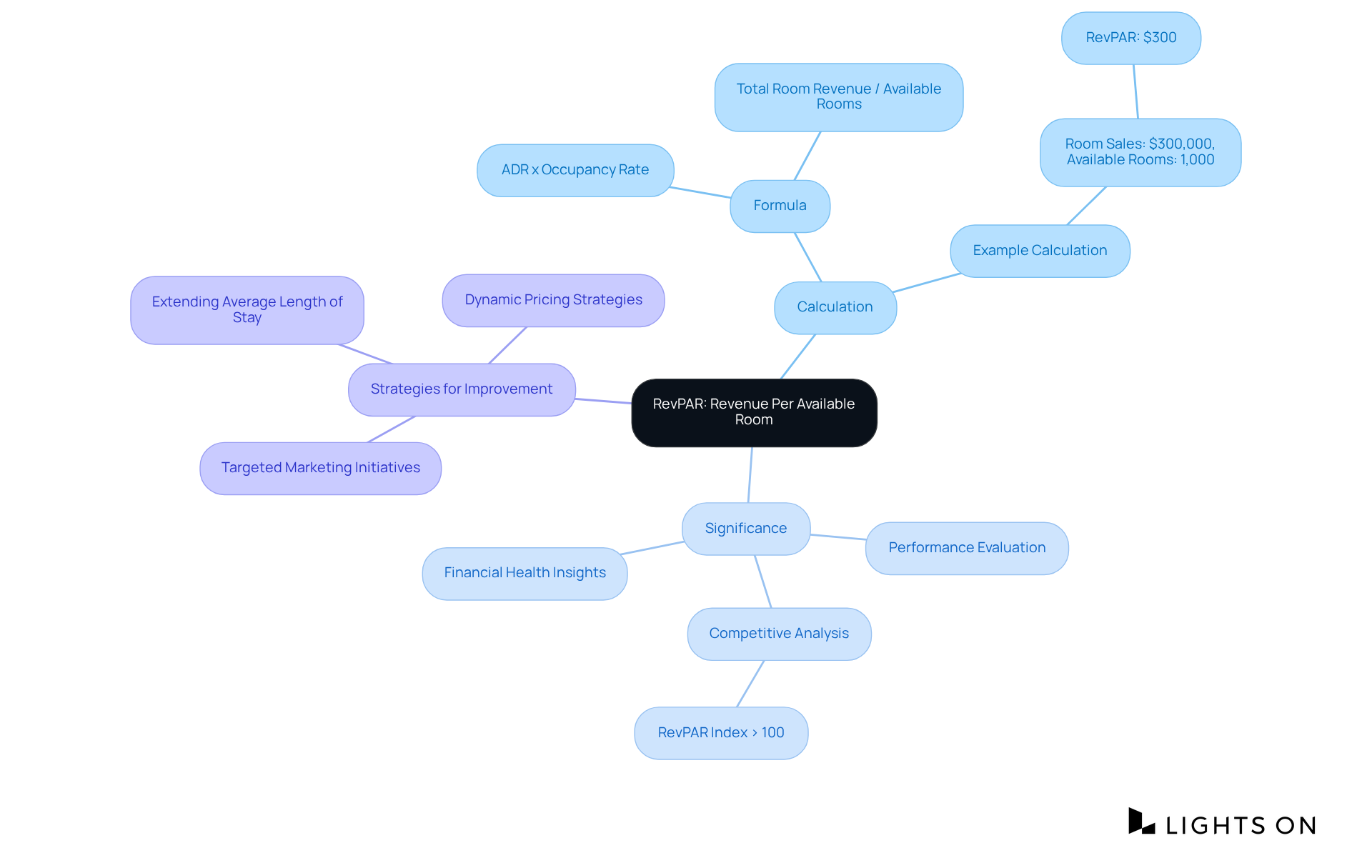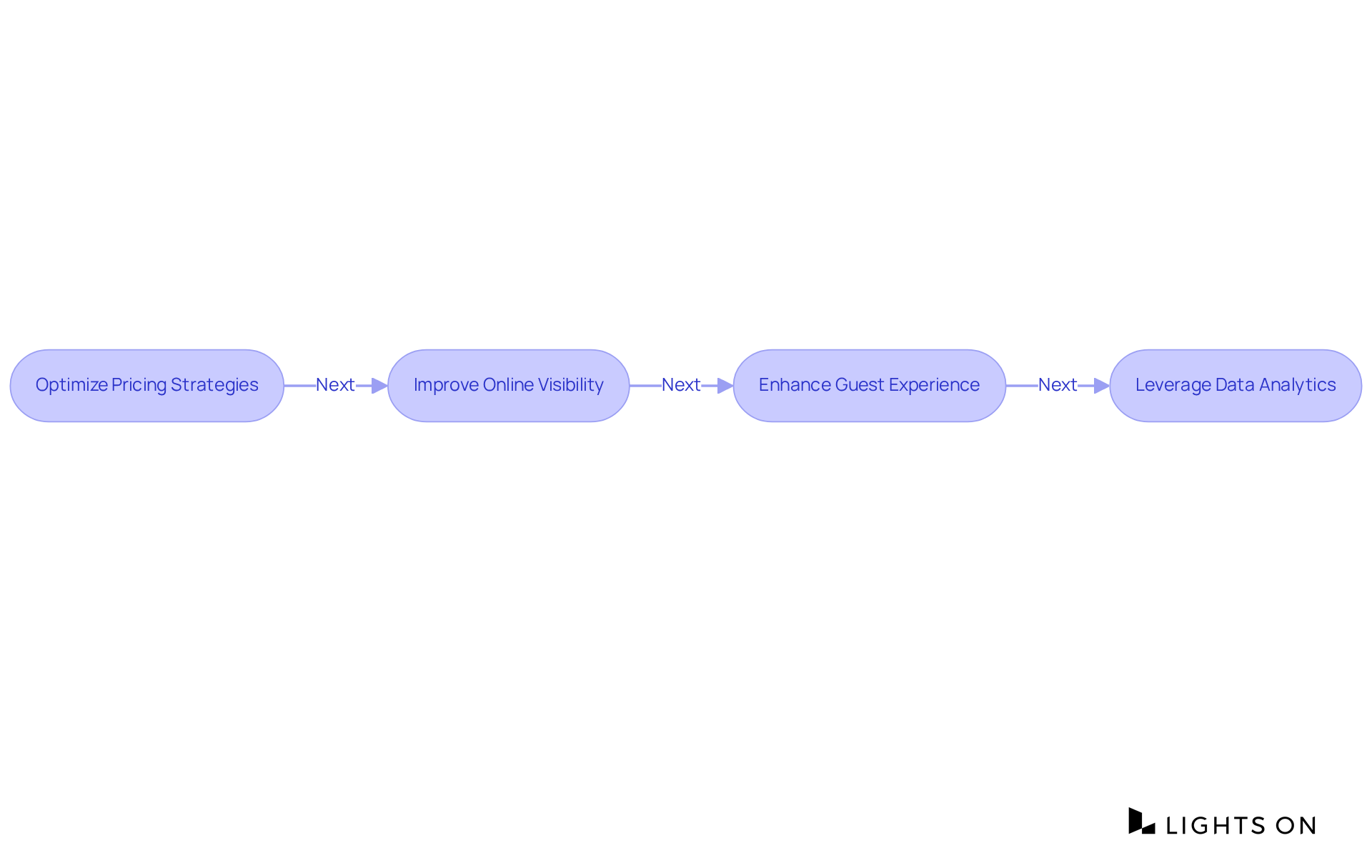This article delves into the mastery of the RevPAR (Revenue Per Available Room) equation, offering a comprehensive step-by-step calculation guide along with strategies for enhancement. Understanding and accurately calculating RevPAR is paramount for hotel operators aiming to optimize their pricing and occupancy strategies. Such mastery not only bolsters financial performance but also strengthens competitiveness within the hospitality industry. By grasping the nuances of RevPAR, operators can unlock new avenues for revenue growth and operational efficiency.
In the competitive landscape of the hospitality industry, mastering the RevPAR equation is essential for property owners and managers who aim to maximize their financial performance. This pivotal metric not only reflects a hotel's ability to generate income from its available rooms but also offers invaluable insights into occupancy levels and pricing strategies. However, many hoteliers struggle with effectively calculating and leveraging RevPAR to its full potential.
What best practices can be employed to conquer this crucial equation, and how can it inform strategic decision-making in an ever-evolving market?
The serves as a crucial performance metric within the , assessing an establishment's ability to generate income from its available accommodations. This key figure is calculated by dividing total room income by the number of available rooms over a defined period. Understanding the revpar equation is essential for property owners and managers, as it offers and pricing strategies. An increase in the revpar equation signals enhanced performance, reflecting .
In the highly competitive hospitality market, this metric serves as a vital tool for businesses to identify and optimize their . For instance, accommodations with a RevPAR index exceeding 100 demonstrate superior performance relative to their competitors, highlighting the significance of the revpar equation in strategic decision-making. Furthermore, implementing effective —such as targeted marketing initiatives and efforts to extend the average length of stay—can significantly improve the revpar equation.
By , operators are empowered to make informed decisions that not only enhance profitability but also improve operational efficiency, ultimately driving growth in an increasingly challenging landscape.

To and understand its implications for , follow these essential steps:
The is a crucial metric in the hospitality industry. Apply the Formula: Utilize the following formula:
RevPAR = [[Total Room Revenue](https://lightson.co/about-us)](https://lightson.co/about-us) / Total Available Rooms
For instance, if a hotel generated $100,000 in room revenue and had 10,000 available room nights, the calculation would be:
RevPAR = $100,000 / 10,000 = $10
This indicates that the hotel earned $10 for every available room during that period. Regularly performing this calculation enables continuous and assists hoteliers in recognizing opportunities and challenges in their strategies.
Understanding is vital for accommodation managers, as it provides and aids in pinpointing areas for enhancement in pricing and occupancy strategies. By , hoteliers can significantly improve their financial performance and make informed decisions regarding pricing and marketing. Furthermore, insights derived from calculations can guide targeted marketing strategies, enabling to refine their offerings and boost bookings effectively.

To enhance your RevPAR, consider implementing the following strategies:

To effectively manage RevPAR and avoid common pitfalls, consider these strategies:
By implementing these strategies, hotels can significantly improve their , as indicated by the revpar equation.

Mastering the RevPAR equation is not just beneficial; it is essential for any hospitality professional dedicated to enhancing their establishment's financial performance. This critical metric measures revenue efficiency and serves as a guiding light for strategic decision-making. By understanding and applying the RevPAR formula, hotel operators can gain invaluable insights into their pricing strategies and occupancy levels, ultimately driving profitability and operational efficiency.
In this guide, we have explored key components of the RevPAR equation, including its calculation, significance in the hospitality industry, and proven strategies for improvement. The steps to calculate RevPAR have been clearly outlined, emphasizing the importance of total room income and available rooms. Furthermore, strategies such as optimizing pricing, enhancing online visibility, improving guest experiences, and leveraging data analytics have been discussed as effective means to boost RevPAR and overall financial performance.
Ultimately, the significance of RevPAR extends beyond mere numbers; it reflects the health and potential of a hospitality business. By continually monitoring this metric and implementing targeted strategies, hotel operators can position themselves for success in a competitive market. Embracing the RevPAR equation not only empowers informed decision-making but also fosters a culture of continuous improvement, ensuring that establishments thrive and adapt in an ever-evolving landscape.
What does RevPAR stand for?
RevPAR stands for Revenue Per Available Room, a key performance metric in the hospitality industry that measures an establishment's ability to generate income from its available accommodations.
How is RevPAR calculated?
RevPAR is calculated by dividing total room income by the number of available rooms over a defined period.
Why is understanding RevPAR important for property owners and managers?
Understanding RevPAR is essential for property owners and managers as it provides valuable insights into occupancy levels and pricing strategies, helping to assess financial performance.
What does an increase in RevPAR indicate?
An increase in RevPAR indicates enhanced performance and reflects effective financial management strategies within a hospitality establishment.
How does RevPAR help businesses in the hospitality market?
RevPAR serves as a vital tool for businesses to identify areas for improvement and optimize their financial performance in a highly competitive market.
What does a RevPAR index exceeding 100 signify?
A RevPAR index exceeding 100 signifies superior performance relative to competitors, highlighting the importance of RevPAR in strategic decision-making.
What strategies can improve the RevPAR equation?
Effective revenue management strategies, such as targeted marketing initiatives and efforts to extend the average length of stay, can significantly improve the RevPAR equation.
How does mastering the RevPAR equation benefit operators?
Mastering the RevPAR equation empowers operators to make informed decisions that enhance profitability, improve operational efficiency, and drive growth in a challenging landscape.
Transform your group booking strategies with Lights On and watch your occupancy soar.